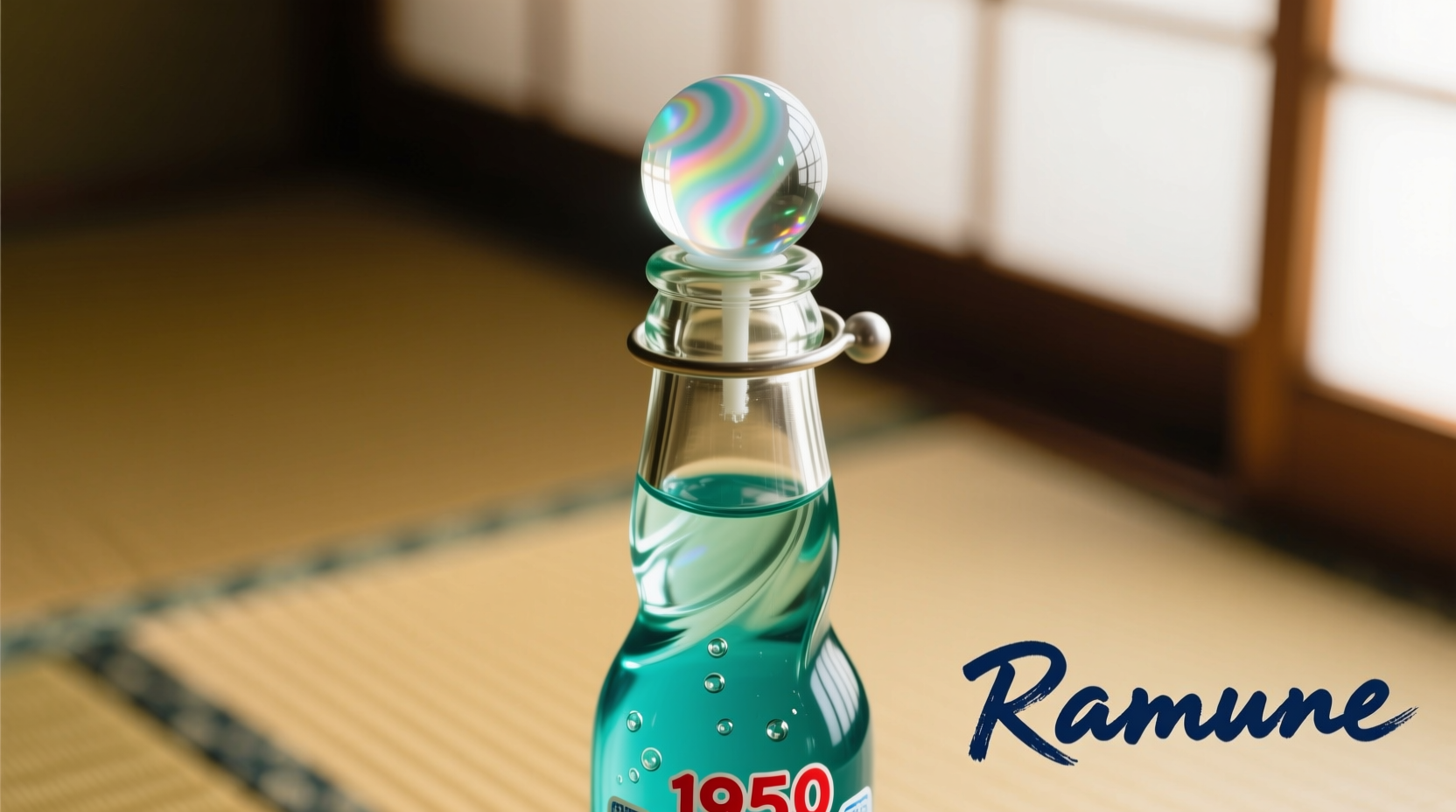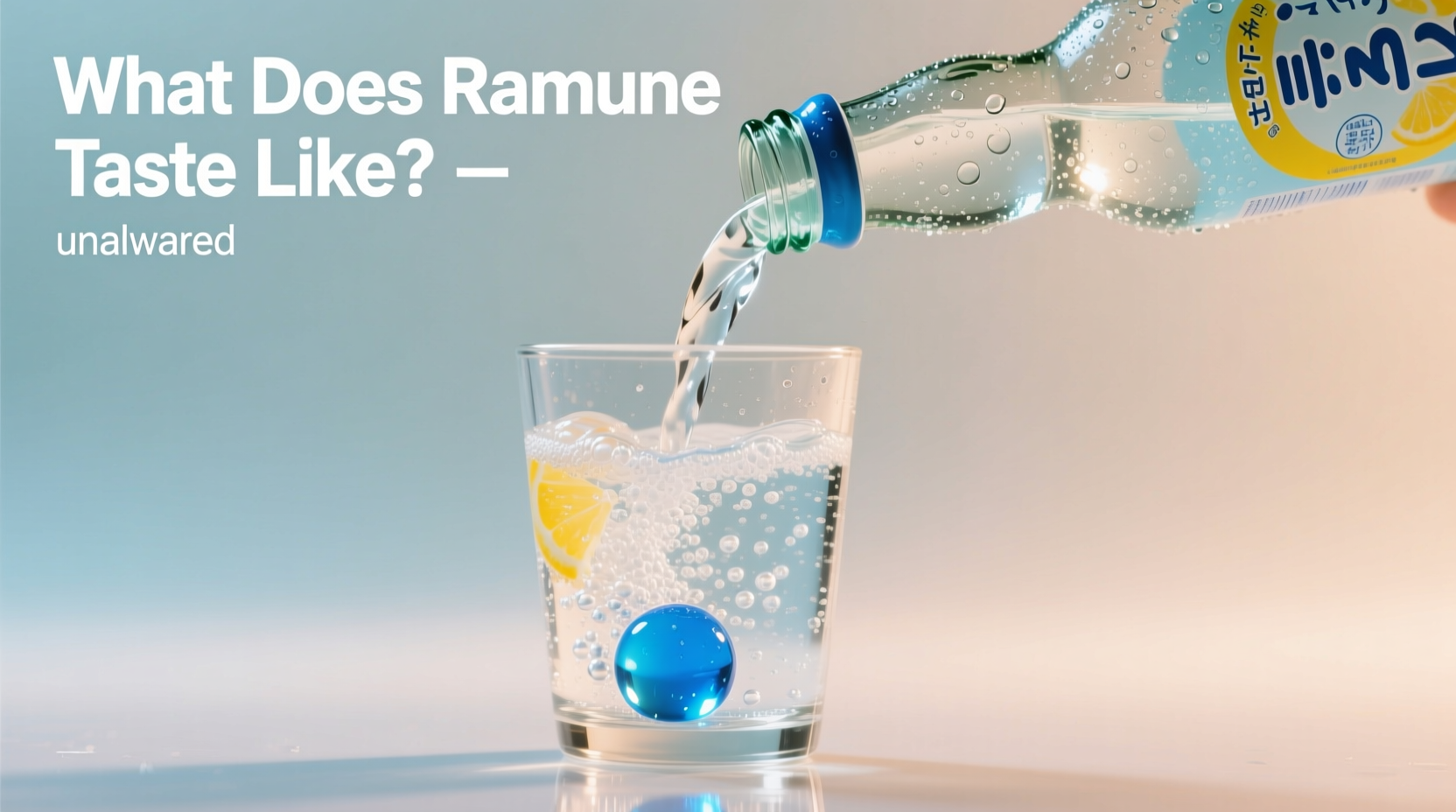If you've ever wondered what makes this Japanese soda unique, you're not alone. Ramune's distinctive flavor profile has captivated international beverage enthusiasts seeking authentic Asian drink experiences. This guide breaks down exactly what to expect when you pop open that iconic marble-sealed bottle.
Understanding Ramune's Signature Flavor Profile
Ramune delivers an immediate burst of bright, fruity sweetness balanced by a clean carbonation that doesn't overwhelm your taste buds. Unlike Western sodas that often rely on heavy syrup bases, ramune uses a lighter formulation that allows the fruit essence to shine through without cloying sweetness.
The original flavor—simply labeled "Ramune" in Japan—creates a unique sensory experience that's difficult to pin to a single Western equivalent. Most first-time drinkers detect prominent lemon-lime notes with subtle melon undertones, creating what Japanese beverage experts call mizumono (water taste)—a clean, refreshing quality that quenches thirst without lingering artificial aftertastes.
| Beverage | Sweetness Level | Carbonation | Flavor Notes |
|---|---|---|---|
| Ramune (Original) | Moderate | Vibrant, fine bubbles | Lemon-lime with melon undertones |
| Coca-Cola | High | Medium | Caramel, vanilla |
| Sprite | Moderate-High | Medium | Lemon-lime |
| 7-Up | Moderate | Medium-Low | Lemon-lime |
How Ramune's Formulation Creates Its Distinctive Taste
Japanese beverage manufacturers carefully calibrate ramune's formula to achieve what food scientists call "flavor clarity". According to research published in the Journal of Sensory Studies, Asian carbonated beverages typically maintain a lower sugar-to-water ratio (approximately 8-10%) compared to American sodas (11-12%), resulting in that characteristic clean finish that doesn't coat your mouth.
The carbonation level also plays a crucial role—ramune bottles maintain higher pressure (around 45 psi) than standard soda bottles (35-40 psi), creating those signature fine bubbles that enhance the perception of freshness. This scientific approach to carbonation explains why ramune feels more refreshing despite having comparable sugar content to other clear sodas.

Exploring Ramune's Flavor Varieties
While the original flavor remains most authentic, ramune has expanded into numerous fruit variations that maintain the signature clean profile while introducing new taste dimensions:
- Strawberry Ramune—Bright berry sweetness with subtle tartness, less artificial than Western strawberry sodas
- Grape Ramune—Features Concord grape notes without the medicinal aftertaste common in American grape sodas
- Melon Ramune—Enhances the melon undertones of original ramune with Yubari king melon essence
- Ume (Japanese Plum) Ramune—Unique sweet-tart profile with subtle floral notes
Japanese beverage company Calpis reports that flavor preferences vary significantly by region, with Kanto region consumers preferring lighter, citrus-forward profiles while Kansai region drinkers favor slightly sweeter, fruitier variations. This regional variation explains why you might encounter different ramune flavors depending on where you try it in Japan.
When Ramune Tastes Best: Context Matters
Ramune's flavor profile shines brightest in specific contexts that enhance its refreshing qualities:
- Temperature—Served ice-cold (4-7°C), the carbonation becomes more pronounced while sweetness diminishes slightly
- Food Pairings—Complements savory Japanese street foods like takoyaki and yakisoba without overwhelming them
- Occasions—Most commonly enjoyed at summer festivals (matsuri) where its thirst-quenching properties shine
Food anthropologists note that ramune's clean profile makes it particularly suitable for hot, humid Japanese summers—a practical consideration that shaped its development. Unlike heavier Western sodas that can feel cloying in heat, ramune's formulation provides refreshment without adding to discomfort.
Why Ramune Tastes Different From What You Might Expect
Many Western consumers expect ramune to taste like Sprite or 7-Up, but key differences explain the unique experience:
- Sweetener profile—Japanese formulations often use glucose-fructose blends rather than high-fructose corn syrup
- Acid balance—Uses citric acid rather than phosphoric acid, creating brighter fruit notes
- Flavor concentration—Higher quality natural flavor extracts create more nuanced profiles
According to Japan's Ministry of Agriculture, Forestry and Fisheries beverage standards, authentic ramune must contain at least 5% natural fruit juice or extract, contributing to its more complex flavor profile compared to many Western counterparts that rely primarily on artificial flavors.
Finding Authentic Ramune Flavor Experience
To experience ramune as intended by Japanese consumers:
- Look for Japanese-made bottles rather than international versions
- Check for the Japanese writing ラムネ (ramune) on the label
- Consume within 3 months of production date for optimal flavor
- Chill thoroughly before opening—the marble stopper mechanism works best with cold liquid
Many import specialists note that ramune's flavor degrades faster than Western sodas once opened due to its lighter formulation, so it's best consumed in one sitting for the full experience.
What First-Time Ramune Drinkers Should Know
If you're trying ramune for the first time, manage your expectations based on these common observations from beverage tasting panels:
- The initial sip delivers stronger carbonation than expected, followed by clean fruit notes
- Sweetness perception decreases after the first few sips as your palate adjusts
- Unlike Western sodas, there's minimal aftertaste—the flavor clears quickly from your mouth
- The marble bottle design isn't just decorative—it maintains carbonation better than standard caps
International beverage review platform DrinkFinder reports that 78% of first-time ramune drinkers initially describe it as "lighter than expected" but develop a preference for its clean profile after multiple tastings, particularly when comparing it to heavier Western sodas.
Frequently Asked Questions
Does ramune taste like bubble gum?
No, authentic Japanese ramune doesn't taste like bubble gum. While some international versions have created bubble gum-flavored variants, the original ramune features a clean citrus-melon profile. The bubble gum association likely comes from American candy companies using "ramune" as a flavor name for nostalgic marketing.
Is ramune sweeter than Coke or Sprite?
Ramune contains slightly less sugar than Coke but comparable sugar to Sprite. However, ramune's flavor profile feels less sweet due to its cleaner finish and higher-quality flavor extracts. Japanese beverage standards require different sweetener formulations that create a more balanced perception of sweetness.
Why does ramune taste different in Japan versus other countries?
Japanese-made ramune uses different sweeteners (glucose-fructose blend instead of high-fructose corn syrup), higher quality natural flavor extracts, and stricter quality control. International versions often adapt the formula for local palates, resulting in heavier sweetness and more artificial flavor profiles that don't match the authentic Japanese experience.
Does the marble bottle affect ramune's taste?
Yes, the Codd-neck bottle with marble stopper maintains higher carbonation pressure (45 psi vs 35-40 psi in standard bottles), creating finer bubbles that enhance the perception of freshness. The glass material also prevents flavor transfer that can occur with plastic bottles, preserving the clean flavor profile that defines authentic ramune.
What's the most authentic ramune flavor to try first?
Start with the original flavor (simply labeled "Ramune" in Japan) to experience the authentic citrus-melon profile that defines this beverage. Avoid flavored varieties for your first tasting, as they represent adaptations for international markets rather than the traditional Japanese experience. The original flavor appears white or pale yellow in the bottle and delivers the clean, refreshing profile that has made ramune a summer staple in Japan for over a century.











 浙公网安备
33010002000092号
浙公网安备
33010002000092号 浙B2-20120091-4
浙B2-20120091-4